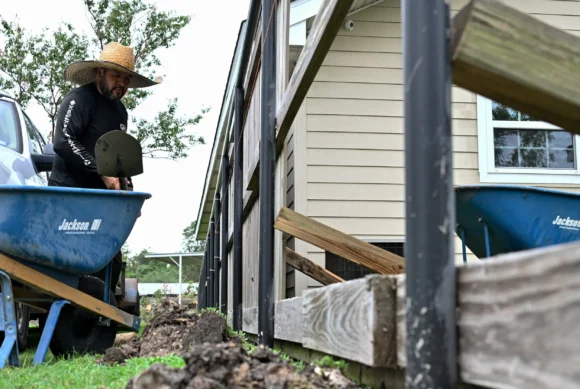U.S. insured losses from Hurricane Beryl will likely fall between $2.5 billion to $4.5 billion, according to estimates by Moody’s RMS Event Response. Insured losses associated with the storm include wind, storm surge, and precipitation-induced flooding.
Moody’s estimates total non-U.S. insured losses from Hurricane Beryl will not exceed $1.5 billion, with damages in the Caribbean, including Jamaica and the Windward Islands driving the majority of insured losses.
“Beryl ran out of room to intensify in the Gulf of Mexico before making landfall in Texas, which lessened the impact on the (re)insurance market,” said Jeff Waters, director, North Atlantic hurricane models, Moody’s. “Tracking inland, Beryl is certainly noteworthy as it maintained intensity to bring some of the strongest observed winds in recent history over the densely populated Houston Metro area.”
Moody’s estimates wind will make up $2.3 billion to $4.2 billion of U.S. insured losses.
“Texas building codes – while not as stringent as other states – should allow most structures to withstand the winds reported from Beryl, but with the region’s high exposure density, significant amounts of expected minor/moderate damage will contribute to the overall total insured losses,” said Waters.
Beryl made landfall as a Category 1 hurricane near Matagorda Bay, Texas on the morning of Monday, July 8. Beryl produced maximum sustained winds of 80 mph and brought life-threatening storm surge to the central Texas coast.
As Beryl moved inland, it spawned severe weather, including several tornadoes, across the Midwest and Northeast. The National Weather Service confirmed at least four tornadoes in Indiana, including an EF-3.
Texas claims
Residents along the central Texas coast and Houston metropolitan are reporting claims from flood, wind and roof damage, said Rich Johnson, director of communications and public affairs for the Insurance Council of Texas. Johnson said the claims from Beryl are consistent with a Category 1 hurricane.
“It’s devastating just because of where it hit,” Johnson said. “Houston has been hit so many times this year already, let alone by another hurricane.”
The Texas Windstorm Insurance Association (TWIA) reported just over 17,000 claims as of Monday afternoon, while the Texas FAIR Plan had just over 4,100 claims. TWIA is a residual insurer of last resort for coastal residents who can’t obtain wind and hail coverage in the standard market. The FAIR Plan provides homeowners coverage to residents denied coverage in the private market.
Troy Koonsman, director of claims operations at Higginbotham, said the Texas-based broker is “seeing day by day a steadily increase in claims.” Koonsman said he anticipates that the claims volume will continue to increase as residents regain power to their homes and businesses.
Koonsman added that the breakdown of claims calculates to a three to one ratio of personal versus commercial insurance.
The Texas Department of Insurance said in a July 13 bulletin that it insurers to work with their policyholders as they recover from the storm.
TDI said it has received questions about deductibles after back-to-back storms. Insurers can make decisions on deductibles on a case-by-case basis, TDI said.
TDI pointed to an example where an insurer can waive applying a second deductible in situations where an insurer has not adjusted the first claim or where repairs have not yet been made.
“TDI encourages insurers to evaluate these situations using a common-sense standard that is fair to consumers,” the bulletin said.
Photo: Juan Piñón disperses wet concrete on Sunday while repairing a fence destroyed by Hurricane Beryl in Houston.
Was this article valuable?
Here are more articles you may enjoy.



 Progressive Q2 Net Income Skyrockets Over 320%
Progressive Q2 Net Income Skyrockets Over 320%  Damage From Hurricane Beryl May Cost Insurers $2.7B in US, $510M in Caribbean: KCC
Damage From Hurricane Beryl May Cost Insurers $2.7B in US, $510M in Caribbean: KCC  Hacker Says AT&T Paid About $400,000 to Erase Sensitive Data
Hacker Says AT&T Paid About $400,000 to Erase Sensitive Data  Beryl’s Remnants Spawned 4 Indiana Tornadoes, Including an EF-3: NWS
Beryl’s Remnants Spawned 4 Indiana Tornadoes, Including an EF-3: NWS 

